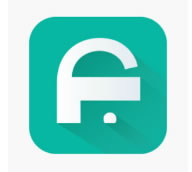One thing that all schools have in common is some sort of ‘Continual Professional Development’, or CPD. Over the country, hundreds of thousands of collective hours and an equal amount of money is spent on the task of improving teaching. But is all this training working as well as it should be?
I don’t think so. And I think that this is as a result of the CPD paradox:
The paradox (part 1)
The CPD paradox has two distinct strands, both of which contribute to the dilemma. The first relates to the aim of Professional Development programmes. It helps to try and be as clear as possible about what exactly this aim is: to turn teachers into effective and skilled practitioners as quickly as possible so that students in their classes get best teaching they can, leading to the best exam results and the best student outcomes. It is an aim that both teachers and schools are committed to; if the aim is achieved, everyone benefits. Given that both teachers and schools have numerous reasons to be committed to the efficacy of their CPD sessions, it would seem that in-school teacher training would, on the whole, be a resounding success.
But despite this, despite the time and energy that is spent by teachers and schools on training, it is often clear that very little, if anything, from school CPD sessions actually turns up in anyone’s day to day teaching practice. Why is this?
1) Teacher exhaustion
Teachers have stressful day-to-day jobs that can leave them feeling mentally exhausted and with little room for personal development. They can be left after a day spent taking part in literally hundreds of emotionally driven interactions with other humans feeling drained, a feeling that is not conducive to effective learning in after school teacher training sessions. Any CPD programme that wants to be really effective needs to take this into account in its design.
2) Workload
Even if teachers come to CPD sessions feeling engaged and ready to learn, there is another challenge. As soon as the session is finished they have to get on with the myriad tasks that are part of the job. This could be marking books or exam scripts, planning lessons or any other of a huge variety of jobs. By the time the teacher finally gets to the end of this mountain of work they go home, only to arrive back at work the following day to face a similar situation. They simply do not have the space to reflect on their learning and put this in practice. CPD sessions need to be designed to mitigate this issue if they are to be successful.
3) The Poorly Planned Session
Often, CPD sessions are planned and lead in school by middle or senior leaders with thousands of other things to do that come under the category of ‘more urgent’. As a result, CPD sessions can often feel poorly planned and with not enough opportunity for active learning rather than passive listening. This is further compounded by the above issues: if a tired and overworked teacher is forced to sit through a badly designed session when they could be working through their mountain of work, they can be left feeling completely turned-off from the very idea of CPD.
The paradox (part 2)
Of course, none of this would matter if teachers didn’t really need CPD to get better. If we could all engage effectively in our own private development, directing our own improvement and working to make changes to our teaching practice then the CPD paradox would cease to exist.
Unfortunately, in-school training is a vital component in teacher development for reasons already discussed. Due to the mentally and physically demanding nature of the job, to the demands on the time of the average teacher, we just do not, on the whole, have the mental space required for really effective personal development. To wade through all the different teaching books, blogs and academic papers, building ourselves a private programme of study and then working reflectively and relentlessly through it is just not something that teachers have the time to do. I’m not saying that this never happens; clearly there are people who have the self-discipline to work in this way but for the vast majority of us, myself included, we need someone to provide us with the impetus and direction to get better quickly.
To summarise, the CPD paradox takes on a viciously circular form . School CPD is not effective because teacher exhaustion and workload means that the material covered does not ‘stick’, and is not actively embedded in practice. Yet these are the very reasons for why an effective training programme is important: it provides teachers with the direction, materials and support to make changes to that they would not otherwise have the time to make on their own.
Principles for a programme that avoids the CPD Paradox
Thankfully, however, I think that with a couple of fairly simple tweaks, these issues can be avoided.
•Participant led – I think that CPD sessions should be, as much as possible, driven by the participants themselves. This helps to avoid the issue of poorly planned sessions from busy senior leaders and puts the onus on the teachers themselves to deliver sessions that are effective for them, and designed to address the issues that they are interested in.
•Accountability for change – Because teachers have so little space for personal projects and reflection, CPD programmes need to be designed to ensure that they are forced to make changes to their practice. This need not be draconian but can simply be some measures such as peer-to-peer observation that ensure that participants in sessions are reminded to actually try out what they learn. Equally, devoting part of the planned session time to practicing skills then and there means that participants are held accountable for moving on.
•In-built uptake time – To avoid the ill-effects of teacher exhaustion and workload, sessions need to be designed so that teachers get an opportunity to put learning into place within the session itself. This can be through practicing skills in groups, or having some time to plan a lesson in the session, thus maximising the chances that things learnt in the abstract in a training session actually find their way into our daily practice as teachers.
What is the point of this website?
I am an English Teacher and Professional Mentor at a large academy school in London. For the last two years, my job within the school has been to plan and lead the CPD of all new staff, NQTs and untrained teachers. After completing the Teach First training programme and being a participant in quite literally hundreds of CPD sessions myself, as well as working as a full time teacher while attempting to improve my own practice, I hope that I designed my own training programme, as well as the individual sessions within it, in such a way that they avoid the most pernicious problems the paradox presents.
I will be posting my
CPD programme and
sessions on this site in the course of time, and hope that they will be of use to anyone leading their own in-school training programme.











